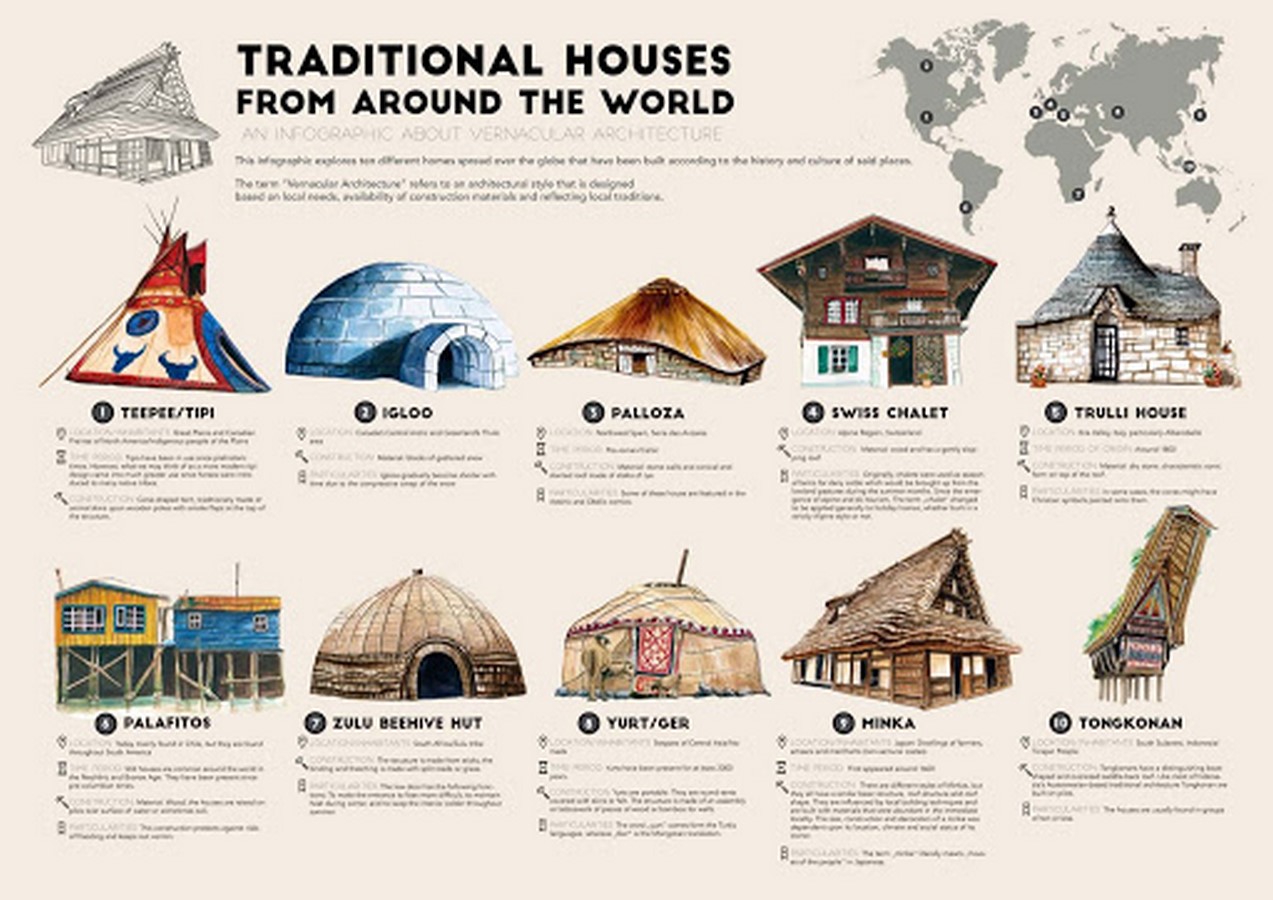What Are The Characteristics Of Vernacular Architecture?

Architecture has been an important aspect in our lives for centuries. It is the art and science of designing and building structures. Architects are an integral part of this process and are responsible for creating beautiful and functional buildings. However, there is one aspect of architecture that is often overlooked - vernacular architecture. Vernacular architecture is the traditional architecture of a particular region or community that is often built by the people of that community. In this post, we will explore why architects must study Vernacular Architecture and its importance in the field of architecture.
What is Vernacular Architecture?
Vernacular Architecture is the architecture that is built using locally available materials and construction techniques. It is the traditional architecture of a particular region or community that has been passed down from generation to generation. The term vernacular comes from the Latin word vernaculus, which means "domestic" or "native." Vernacular Architecture includes a variety of building types such as houses, barns, churches, and public buildings.
Why Architects Must Study Vernacular Architecture?
There are many reasons why architects must study Vernacular Architecture. Here are some of the most important reasons:
1. Sustainability
Vernacular Architecture is built using locally available materials and construction techniques. This makes it a sustainable form of architecture since it reduces the need for transportation and the use of non-renewable resources. By studying Vernacular Architecture, architects can learn how to design buildings that are more sustainable and environmentally friendly.
2. Cultural Identity
Vernacular Architecture is often a reflection of the culture and traditions of a particular region or community. By studying Vernacular Architecture, architects can learn about the cultural identity of a place and design buildings that are in harmony with their surroundings. This can help preserve the cultural heritage of a place and maintain its unique identity.
3. Low Cost
Vernacular Architecture is often built using low-cost materials and simple construction techniques. This makes it a cost-effective form of architecture that is accessible to a wider range of people. By studying Vernacular Architecture, architects can learn how to design buildings that are affordable and accessible to all.
4. Efficiency
Vernacular Architecture is often designed to be efficient in terms of energy use and space utilization. By studying Vernacular Architecture, architects can learn how to design buildings that are more efficient and functional.
5. Inspiration
Vernacular Architecture can be a source of inspiration for architects. By studying Vernacular Architecture, architects can learn about new materials and construction techniques that can be used in modern architecture. This can lead to the development of new and innovative architectural designs.
FAQs
Q. What are some examples of Vernacular Architecture?
A. Some examples of Vernacular Architecture include thatched-roof cottages in Ireland, adobe houses in New Mexico, and stilt houses in Thailand.
Q. How can architects incorporate Vernacular Architecture into their designs?
A. Architects can incorporate Vernacular Architecture into their designs by studying the traditional building techniques and materials of a particular region or community. They can also design buildings that are in harmony with their surroundings and reflect the cultural identity of a place.
Q. What are the benefits of incorporating Vernacular Architecture into modern architecture?
A. The benefits of incorporating Vernacular Architecture into modern architecture include sustainability, cultural identity, low cost, efficiency, and inspiration. By incorporating Vernacular Architecture into modern architecture, architects can design buildings that are more environmentally friendly, affordable, and functional.
Q. How can architects learn about Vernacular Architecture?
A. Architects can learn about Vernacular Architecture by studying the traditional building techniques and materials of a particular region or community. They can also visit Vernacular Architecture sites and talk to the local people about their building practices.
Q. How can Vernacular Architecture benefit a community?
A. Vernacular Architecture can benefit a community by preserving its cultural heritage and identity, providing affordable and functional housing, and promoting sustainability and environmental awareness.
In conclusion, Vernacular Architecture is an important aspect of architecture that architects must study. It provides a sustainable, low-cost, and culturally relevant form of architecture that can benefit communities around the world. By studying Vernacular Architecture, architects can learn about new building techniques and materials that can be incorporated into modern architecture. It is important to preserve the cultural heritage of a place and maintain its unique identity through architecture, and Vernacular Architecture can help achieve this goal.




Post a Comment for "What Are The Characteristics Of Vernacular Architecture?"